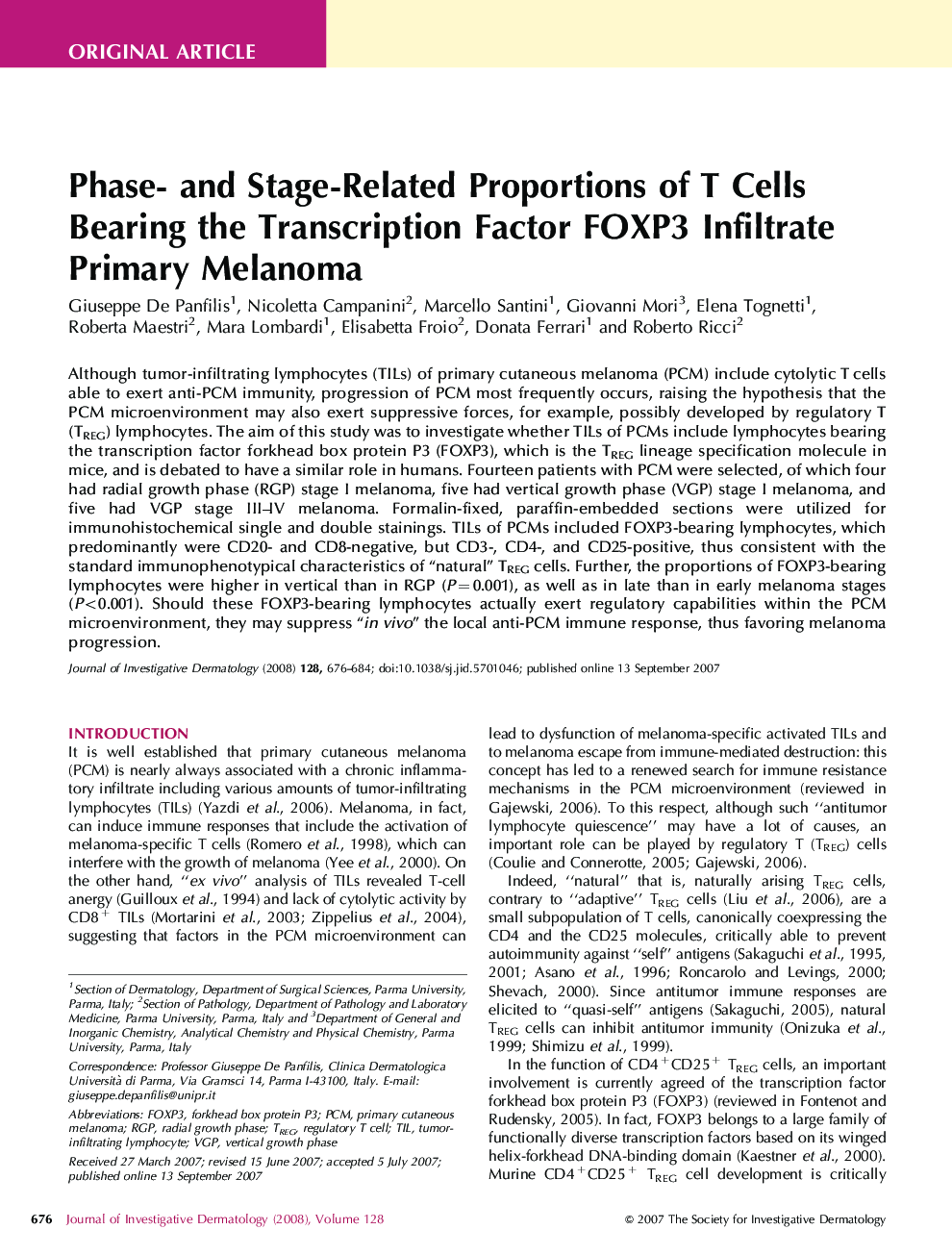| Article ID | Journal | Published Year | Pages | File Type |
|---|---|---|---|---|
| 3216710 | Journal of Investigative Dermatology | 2008 | 9 Pages |
Although tumor-infiltrating lymphocytes (TILs) of primary cutaneous melanoma (PCM) include cytolytic T cells able to exert anti-PCM immunity, progression of PCM most frequently occurs, raising the hypothesis that the PCM microenvironment may also exert suppressive forces, for example, possibly developed by regulatory T (TREG) lymphocytes. The aim of this study was to investigate whether TILs of PCMs include lymphocytes bearing the transcription factor forkhead box protein P3 (FOXP3), which is the TREG lineage specification molecule in mice, and is debated to have a similar role in humans. Fourteen patients with PCM were selected, of which four had radial growth phase (RGP) stage I melanoma, five had vertical growth phase (VGP) stage I melanoma, and five had VGP stage III–IV melanoma. Formalin-fixed, paraffin-embedded sections were utilized for immunohistochemical single and double stainings. TILs of PCMs included FOXP3-bearing lymphocytes, which predominantly were CD20- and CD8-negative, but CD3-, CD4-, and CD25-positive, thus consistent with the standard immunophenotypical characteristics of “natural” TREG cells. Further, the proportions of FOXP3-bearing lymphocytes were higher in vertical than in RGP (P=0.001), as well as in late than in early melanoma stages (P<0.001). Should these FOXP3-bearing lymphocytes actually exert regulatory capabilities within the PCM microenvironment, they may suppress “in vivo” the local anti-PCM immune response, thus favoring melanoma progression.
